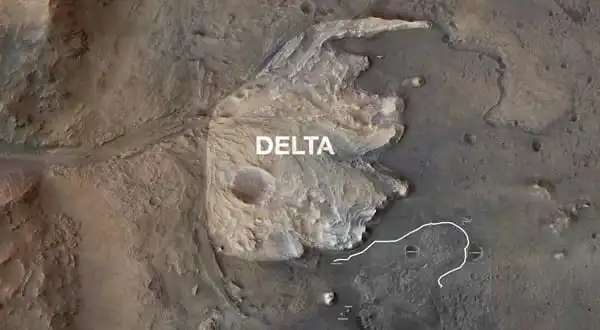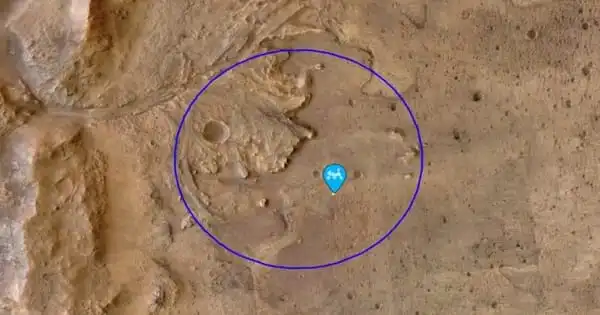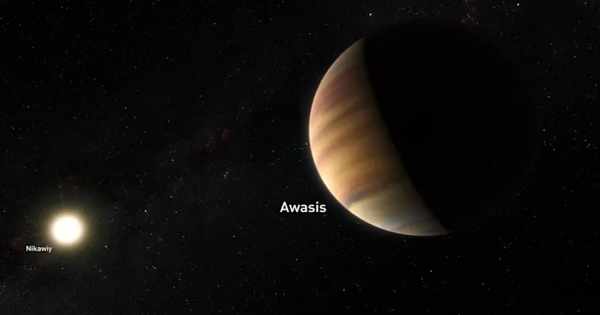Perseverance, NASA’s life-hunting robot The Mars rover has now passed a significant mission milestone. The Perseverance rover has recently been racing over Mars’ surface at breakneck speed, shattering records for the longest drive in a single martian day. The rover has already completed its journey and arrived at its next scientific destination: the delta of the Jezero crater. This location was originally the site of an old river delta, implying that there was once a lot of water on Mars’s surface, which is tremendously intriguing for Mars scientists.
NASA announced today that Perseverance has landed safely at the ruins of an old Red Planet river delta on the floor of the 28-mile-wide (45-kilometer) Jezero Crater (April 19). One of Perseverance’s main goals is to see if there is any indication that there was ever life on Mars. Scientists are very certain that there is no life on Mars today, but there may have been life there millions of years ago when the planet looked drastically different. According to NASA, the red planet once had water on its surface and may have appeared similar to Earth.
The delta will be a “veritable geologic feast” for Perseverance, which is looking for traces of fossilized Mars life, according to mission team members. (The most promising rocks will be stockpiled in preparation for a sample-return mission campaign that NASA and its European counterpart want to launch later this decade.)
Perseverance was deployed to Jezero Crater because the delta has so many unique features. We’ll look for evidence of ancient life in the rocks at the delta’s base, rocks that we believe were originally mud on the bottom of ‘Lake Jezero.’
Ken Farley
“We’ve been looking at the delta from afar for more than a year as we explored the crater floor,” Ken Farley, Perseverance project scientist at the California Institute of Technology, said in a statement released Wednesday (April 19) by NASA’s Jet Propulsion Laboratory (JPL), which manages the mission.
Now that the rover is in the region, its next moves will be “obtaining images of ever-greater detail revealing where we can best explore these important rocks,” Farley added. Perseverance landed in February 2021 inside Jezero Crater, which mission scientists have said hosted a lake and a river delta billions of years ago. Such conditions should be amenable to microbes, meaning the delta region is a rich area to search for signs of Mars life (if it ever existed).
During its first (Earth) year on Mars, the rover worked to the south and west of its landing location, but it recently returned through the touchdown region to reach the delta. Perseverance plans to spend the next week going to the southwest and west to discover out how to best explore this section of the delta.
According to the JPL release, Perseverance data indicates that the delta deposits are roughly 130 feet (40 meters) above the crater bottom, and the teams are contemplating two options. The preferred approach, at least for the time being, looks to be through an area known as “Hawksbill Gap,” which appears to be reachable in less time. But a backup option, “Cape Nukshak,” is available in case data in the coming days shows it to be a safer route.

“Whichever route Perseverance takes to the plateau atop the delta, the team will conduct thorough science studies, including rock core samples, on the way up, then circle around and do the same thing on the way back down,” JPL officials said in a statement.
During this Delta Front manoeuvre operation, the rover will spend around six months collecting eight samples. The plan then calls for Perseverance to return to the top of the delta, maybe adopting the backup option of sampling a previously unexplored region, to spend six more months on a “Delta Top Campaign.”
“Perseverance was deployed to Jezero Crater because the delta has so many unique features,” Farley explained. “We’ll look for evidence of ancient life in the rocks at the delta’s base, rocks that we believe were originally mud on the bottom of ‘Lake Jezero.'”
Perseverance will also try to collect sand and rock fragments from upstream in locations that the rover is not likely to reach during its career on Mars. Farley believes that geography will be extremely beneficial: “We can take benefit of an ancient Martian river that conveyed the planet’s geological knowledge to us.”
Perseverance began its second science mission a month earlier than predicted, thanks to an enhanced autonomous hazard-detection system that helps it to avoid barriers including as boulders, jagged rocks, craters, and sandpits in Jezero Crater. (During its recent road trip, the rover was told to stop and turn in place 55 times to avoid hazards, according to JPL.)
In contrast, NASA’s decade-old Curiosity Mars rover recently had to deviate from a planned route owing to hazardous “gator-back” terrain. Curiosity also has an earlier version of the Martian wheel that is less adapted for the frequently hazardous terrain than Perseverance. According to JPL officials, Percy’s wheels feature twice as many treads and a smooth curvature that makes them more flexible to the terrain.
















